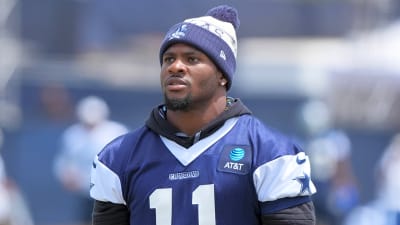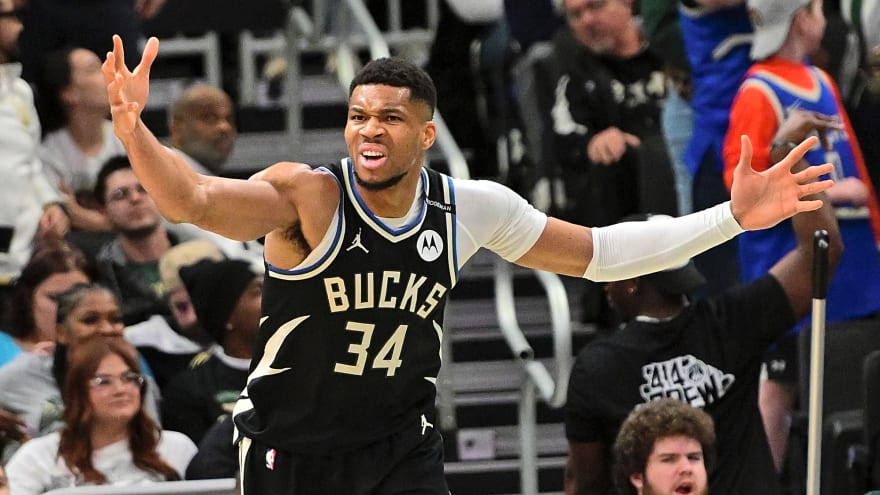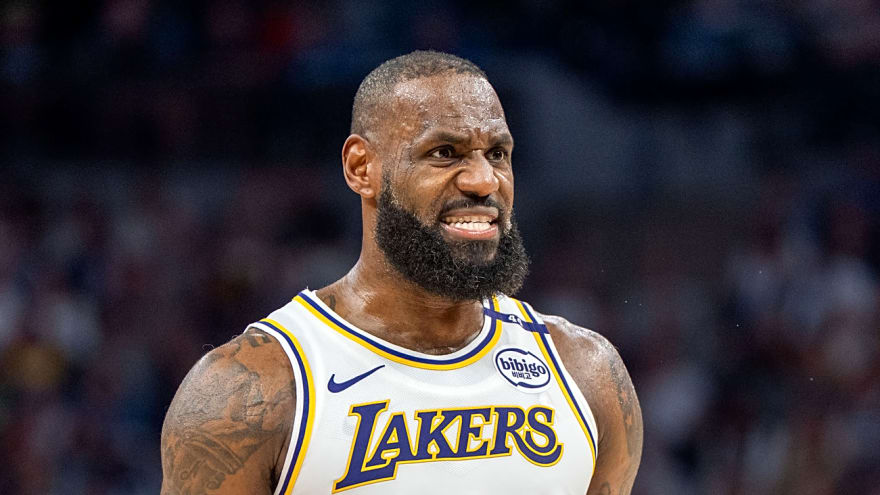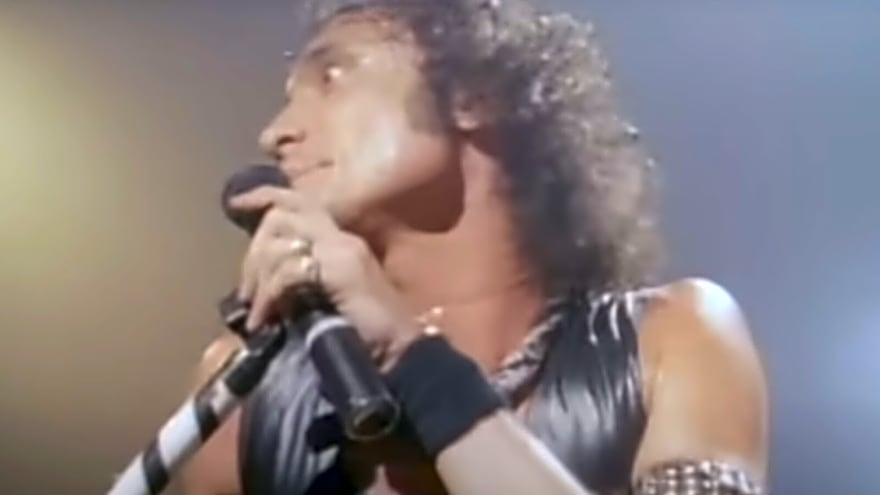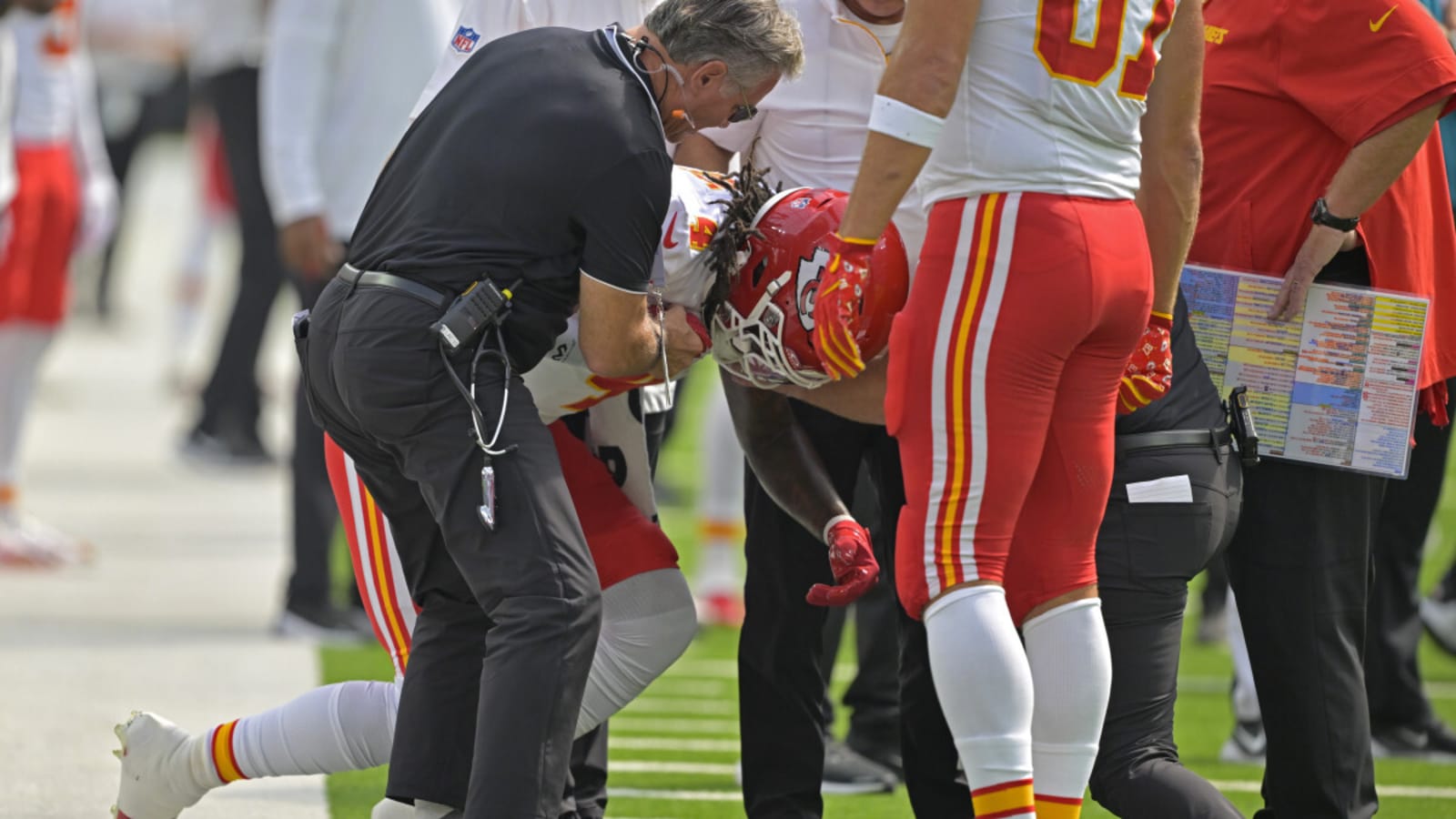
The Kansas City Chiefs will soon have greater clarity on WR Rashee Rice's knee injury.
Rice was placed on injured reserve on Wednesday after suffering an apparent right knee injury in the first quarter of the team's Week 4 game against the Los Angeles Chargers. The injury occurred during an interception return and was an unfortunate case of friendly fire in a collision with QB Patrick Mahomes. Rice was eventually carted off the field and it was widely reported that Rice was suspected of suffering a torn ACL.
The initial testing and subsequent MRI revealed no conclusive evidence of a season-ending ACL tear. NFL insiders reported last week that more testing was needed to determine the best course of action for Rice. Andy Reid indicated that it was a matter of getting the swelling down in his knee and undergoing additional testing, which is slated to happen early during the Chiefs' upcoming bye week.
Here's a look at everything that we know so far. . .
Chiefs WR Rashee Rice to meet with knee specialist this week
As first reported by The Athletic's Nate Taylor, Rice is slated to meet with renowned Dr. Dan Cooper in Dallas, Texas early this week. Dr. Cooper will perform an exploratory arthroscopic procedure on Rice's knee to ascertain the full extent of the injury. He'll be checking the ACL, PCL, and LCL, in addition to other knee mechanisms that could be injured.
Here's some info on Dr. Cooper from his website:
"Dr. Cooper’s practice primarily focuses on minimally invasive arthroscopic and reconstructive surgical techniques for the knee and shoulder that restore stability and joint function in young athletic individuals. Dr. Cooper is an internationally known expert in the treatment of complex knee ligament injuries involving injury to the anterior cruciate, posterior cruciate and collateral ligaments, and his practice serves as a referral center for difficult and revision cases."
There are a few different outcomes of the knee scope, leading to different return-to-play timelines.
What is Chiefs WR Rashee Rice's return timeline?
If a single one of the aforementioned knee ligaments checked out during the exploratory scope requires surgery, Rice would be out for the entire 2024 NFL season. He could have up to a 9-12 month recovery timeline depending on the severity and ligaments damaged. The optimistic and best-case outcome is that there is not enough damage to require Dr. Cooper to perform surgery. That would likely mean Rice would remain on injured reserve for 4-8 weeks and be able to return during the 2024 NFL season. Fox Sports NFL insider Jay Glazer suggested on "FOX NFL Sunday" that a six-week timeline is on the table if Rice somehow escapes without requiring surgery.
Which players/teams are being connected to the Chiefs in trade?
Whether Rice gets good or bad news this week, the Chiefs are said to be in the market to add a receiver at the trade deadline. ESPN's Adam Schefter and NFL Network's Ian Rapoport each reported over the weekend that Brett Veach will explore potential trades at the wide receiver position. Schefter and Rapoport each mentioned Tennessee Titans WR DeAndre Hopkins as a potential trade target for Kansas City. They cite the Chiefs' interest in Hopkins in the 2023 offseason before he signed a two-year deal worth $26 million with the Tennessee Titans. They also point to the L'Jarius Sneed trade this offseason as these two clubs having a working relationship.
Through four games this season, Hopkins has 10 catches for 121 yards and one touchdown. It doesn't seem like this would be a scenario where Hopkins is unhappy and requests a trade. This seems like a scenario where the Titans are a bad football team in 2024 and are trying to recoup some draft capital for a player slated to become a free agent in 2025.
I was raised to be loyal and don’t take the easy road…
— Deandre Hopkins (@DeAndreHopkins) October 5, 2024
As for other potential trade targets, Schefter mentioned the New York Jets as a team that might be willing to part with a receiver should they acquire Davante Adams from the Las Vegas Raiders. Rapoport says the Chiefs will look at players with lower base salaries because of their salary cap space restrictions. He reports the Chiefs have $15 million in space available, but the NFLPA public salary cap report still has Kansas City with just $4.9 million in available cap space. Here's a look at some of the receivers the Chiefs can realistically afford.
More must-reads:
- Browns reporter says rookie is 'not an NFL QB'
- Zero RB Strategy Explained: Top Fantasy Football Targets for 2025
- The 'NFL mascot names' quiz
Breaking News
Trending News
Customize Your Newsletter
 +
+
Get the latest news and rumors, customized to your favorite sports and teams. Emailed daily. Always free!
TODAY'S BEST

Green Bay Packers: MarShawn Lloyd’s Injury Opens Door For Experiment
The Green Bay Packers are dealing with some injuries heading into their first game in the 2025 NFL preseason. Among the hurt bodies on their roster is running back MarShawn Lloyd, who has impressed at Packers training camp but is down with a lower-body injury he suffered last week. The injury was initially blamed on a hit by defensive back Nate Hobbs, but it was later found out to be a non-contact type. With the former USC Trojans running back out of commission at the moment, the Packers are said to be open to testing out some creative approaches in the backfield. “I’m told the outlook for MarShawn Lloyd’s groin injury is roughly one to two weeks, so he could be back as early as next week,” wrote Jeremy Fowler of ESPN. “Don’t be surprised if the Packers, who love versatility on offense, experiment with backups Chris Brooks and Emanuel Wilson playing hybrid or fullback-type roles at times.” When will Green Bay Packers RB MarsShawn Lloyd be healthy again? As said by Fowler, the earliest Lloyd could return to the field is next week, which would rule him out for this coming Saturday’s preseason matchup versus the New York Jets at Lambeau Field in Green Bay. Also, under that projection, he can be back in action for the meeting with the Indianapolis Colts on the road in Week 2. The Packers can also just be extra careful and hold him back for the entire offseason, as they look forward to having Lloyd 100 percent healthy for their first assignment in the 2025 NFL season, which is a home game against the Detroit Lions.

Surprising Marlins earn MLB first in sweep of Yankees
The Miami Marlins achieved a franchise first on Sunday. In doing so, they carved out an interesting place in MLB history. With a 7-3 victory over the Yankees, the Marlins swept New York for the first time in a series of three or more games. In doing so, the Marlins became the only team to have a winning record, including the postseason, against the Yankees. The Yankees now have a 22-21 record against the Marlins in the regular season. However, the Marlins won the 2003 World Series against the Yankees in six games, giving the Fish a 25-24 record all-time. The Marlins' victory on Sunday meant more than a unique place in baseball history. That victory evened the Marlins' record at 55-55, the first time they have been at .500 or better since April 15 (8-8). The Marlins are 30-14 in their last 44 games, tying the 2003 championship team for the best stretch (last done from June 18-Aug. 9) in franchise history. The Marlins defied expectations at the trade deadline, holding on to pitchers Sandy Alcantara and Edward Cabrera. Their only trade involved sending outfielder Jesus Sanchez to Houston, acquiring pitcher Ryan Gusto and a pair of prospects. Expectations were that the Marlins were simply waiting for the offseason to trade those pitchers, as there may be a larger market. Instead, the generally inexperienced Marlins roster is growing and improving by the day. They have clawed back from a 24-40 start to the season to pull themselves into the NL wild-card conversation. Although a lot would need to go right for the Marlins to reach the playoffs this season, they could be a dangerous team over the rest of the season and beyond. The Yankees found that out the hard way.
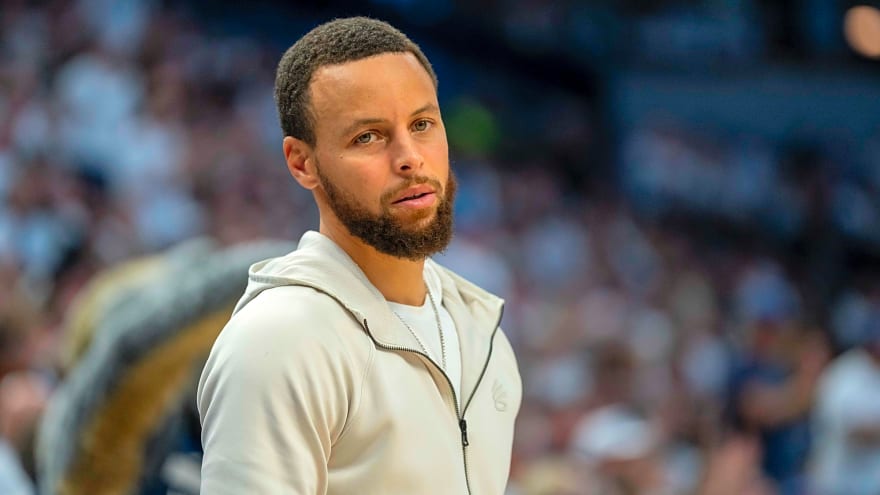
Stephen Curry makes candid admission about his money
Stephen Curry has done a lot of winning on the court, and that usually translates to big numbers off it as well. On top of being the greatest shooter in NBA history, No. 30 has built a strong investment and endorsement portfolio. Nevertheless, he's not too worried about the numbers. In a recent interview with Complex, he shrugged when asked whether his reported net worth of $240 million was accurate. ″[Net worth] is not something I really worry about too much. I have somebody that takes care of that for me,” Curry said. Instead, the four-time NBA champion is looking to build value and put together a portfolio that transcends his financial aspirations. “The idea of what I have going on is about creating a portfolio of stuff that is aspirational in terms of wealth,” Curry explained. “But me and my wife, we hate talking about legacy, like, that’s self-serving. You want to have something you look back on and are proud of, knowing we’ve been blessed with so many opportunities and so many resources and so many relationships.” Curry's deal with Under Armour reportedly pockets him around $20 million a year. He's also about to make north of $62 million in the final year of his four-year, $215 million extension with the Golden State Warriors. He also has endorsement deals with Brita, Degree deodorant, Muscle Milk, JBL, Zamst, Rakuten, Palm, Nissan and Chase Bank. He's made more money than he can ever spend, so it's all about building value right now, not just wealth.

Zero RB Strategy Explained: Top Fantasy Football Targets for 2025
If you’ve participated in fantasy football for a few years, chances are you’ve heard discussions about “Zero RB.” But what does the zero running back strategy actually mean, and how might it benefit fantasy managers on draft day? The following is a comprehensive look at the Zero RB approach, as well as players suited to this draft philosophy whom you can consider targeting for the upcoming season. Don't forget to sign up for your fantasy football league on Yahoo Sports! What is Zero RB Strategy? Although its name suggests otherwise, the Zero RB strategy doesn’t require fantasy football managers to entirely disregard the running back position during drafts or leave those roster spots empty. Typically, the Zero RB approach involves focusing on other positions in the early rounds, building a strong group of wide receivers and locking in top options at quarterback and/or tight end. While opinions differ on the exact round where Zero RB draws the line, the strategy generally means waiting until at least the fifth round or beyond to select your first running back. Running back is one of the most unpredictable positions throughout the season, largely due to injuries. Backup players often step into starting roles and deliver significant fantasy production, no matter their perceived talent. By spending minimal draft capital on premium running backs and instead targeting late-round options with breakout potential, the Zero RB strategy aims to capitalize on this volatility. Use promo code YARD20 for $20 off your FantasyLabs fantasy football subscription! Pros of Zero RB Strategy There are several appealing advantages to the Zero RB strategy, making it especially popular among bold fantasy football drafters. One clear benefit is the opportunity to build greater strength at other positions when running backs are bypassed early. This approach lets fantasy managers more easily prioritize the single starting spots at quarterback and tight end. Instead of struggling to fit high-upside players like Brock Bowers in the second round or elite quarterbacks such as Lamar Jackson, Josh Allen, or Jalen Hurts into your early draft plan, the Zero RB method actually encourages you to target these difference-makers. The positional edge provided by top quarterbacks and tight ends is tempting, but many fantasy players hesitate to spend early draft capital on them. Zero RB, however, expands your flexibility and allows you to load up on these potential game-changers. Injuries are another key factor in favor of this strategy. Running backs are more prone to injuries than most other positions. Every season, several first-round backs land on injured reserve, sinking their fantasy managers’ title hopes along the way. Even elite talents like Christian McCaffrey have endured significant mid-season injuries in multiple years. Zero RB aims to avoid the risk of early picks being wasted on running backs and instead focuses on investing in positions with fewer injury risks. The strategy also aims to take advantage of the inherent volatility at running back—when injuries happen, backups often step into sizable workloads, which rarely occurs at wide receiver. Late-round backs can produce major fantasy value, and with enough lottery ticket picks, you could land on a league-winning player at a bargain. For example, last year Chase Brown emerged from a crowded backfield in Cincinnati to deliver a top-10 PPR season. Of course, there are drawbacks. For starters, you’ll need those late-round running backs to outperform expectations to have a real shot at a fantasy championship. Relying on backups and timeshare players fills your bench with potential options—or weekly headaches as you try to decide who to start. Often, a Zero RB draft means your week one running backs look weak on paper. That’s part of the plan: you hope your other positions are stacked and that, as injuries strike, you’ll be able to improve your running back situation. The greatest risk may come if your top quarterback or tight end suffers a major injury. Since Zero RB teams use early picks to secure stars at these positions rather than focusing on depth, losing one can be devastating—especially if your late-round running backs can’t pick up the slack. With this approach, your path to victory relies on both health for your top picks and luck in finding running back breakouts as the season unfolds. Dominate your Best Ball and season-long fantasy football leagues with FantasyLabs’ brand-new app that's available in the Apple App Store and on Android! Cons of Zero RB Strategy For a strict Zero RB approach, many fantasy managers recommend holding off until at least the fifth round before selecting your first running back. Of course, there isn’t a fantasy football overlord who will punish you for choosing someone like Kenneth Walker III in the third or fourth round. Ultimately, the smartest draft strategy is to capitalize on whatever value is available during your draft. If an outstanding running back falls into the early rounds, it’s perfectly reasonable to abandon the Zero RB philosophy. However, for those committed to following the strategy no matter what, the usual guidance is to build out your starting wide receivers, quarterback, and tight end before targeting a running back. Top Zero RB Targets in 2025 By the fifth or sixth round, there are still several starting running backs on the board who can offer steady production, even if they aren’t likely to deliver elite numbers. Here are some mid-round options to consider as potential RB1s when using a Zero RB strategy: Isiah Pacheco, RB, Kansas City Chiefs Returning from an injury-filled 2024, Isiah Pacheco enters this season healthy and looks significantly undervalued as a sixth-round pick in fantasy drafts, considering the upside he’s shown during his career. After being chosen in the seventh round of the NFL draft, Pacheco finished 15th in PPR scoring in 2023 and appeared poised for a breakout campaign last year before injuries struck. He’s in a strong position to outpace backfield competitors Kareem Hunt and Elijah Mitchell. Kaleb Johnson, RB, Pittsburgh Steelers Rookie running backs are appealing Zero RB selections in the mid-rounds thanks to their potential for a wide variety of outcomes. Former Iowa back Kaleb Johnson is expected to step right into the early-down role left open by Najee Harris and has a chance to challenge Jaylen Warren for more involvement in the passing game. Best Ball rankings from some of the top industry experts are also available on FantasyLabs. Late Round RB Targets in 2025 Keep in mind, the objective is to fill your bench with high-upside running backs in the later rounds of the draft. Here are several late-round fliers who could develop into weekly RB1 options as the season progresses: Cam Skattebo, RB, New York Giants Yet another rookie back with significant upside, Cam Skattebo has earned rave reviews out of Giants training camp. The Arizona State alum was known for his ability to punch in touchdowns near the goal line in college and seems likely to step into valuable scoring situations right away. If Skattebo can also contribute as a receiver, he has the potential to be an outstanding late-round find. While Tyrone Tracy Jr. and Devin Singletary have both shown flashes during their careers, neither should deter fantasy managers from taking a chance on Skattebo. Jordan Mason, RB, Minnesota Vikings Jordan Mason, once a backup for the 49ers, could see improved touches now that he’s with Minnesota. While Aaron Jones currently leads the Vikings’ backfield, Mason stands to claim a larger role, especially with Jones Sr. now 30 years old. Minnesota bolstered their offensive line in the offseason and is expected to rely more on the ground game as rookie J.J. McCarthy steps in as starting quarterback. Should Jones miss time, Mason would have the chance to break out as a top fantasy running back.





